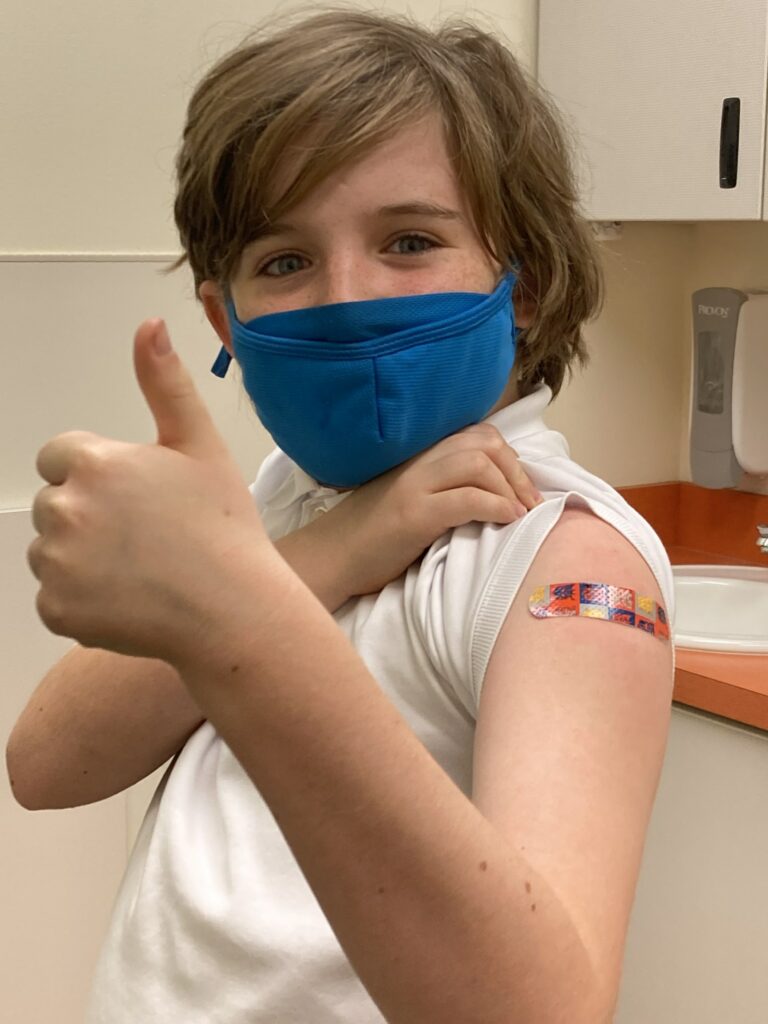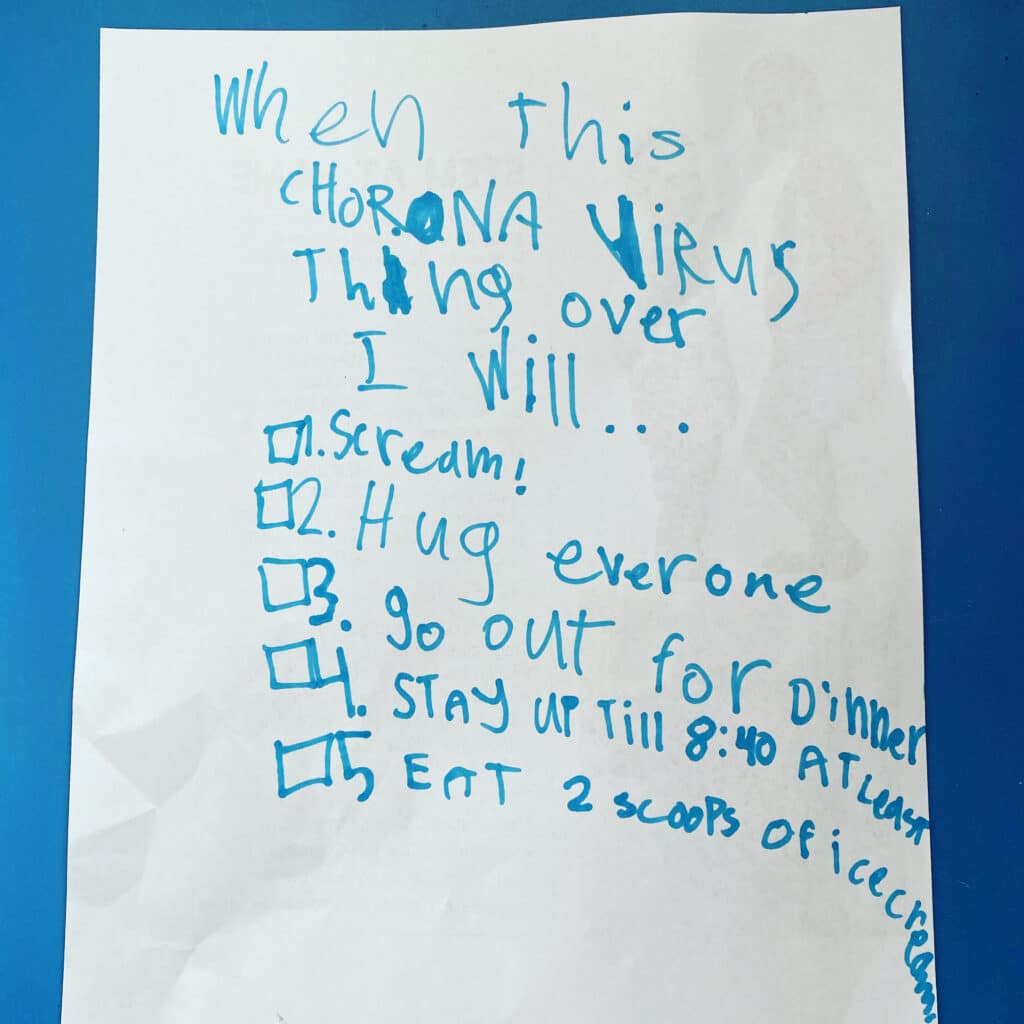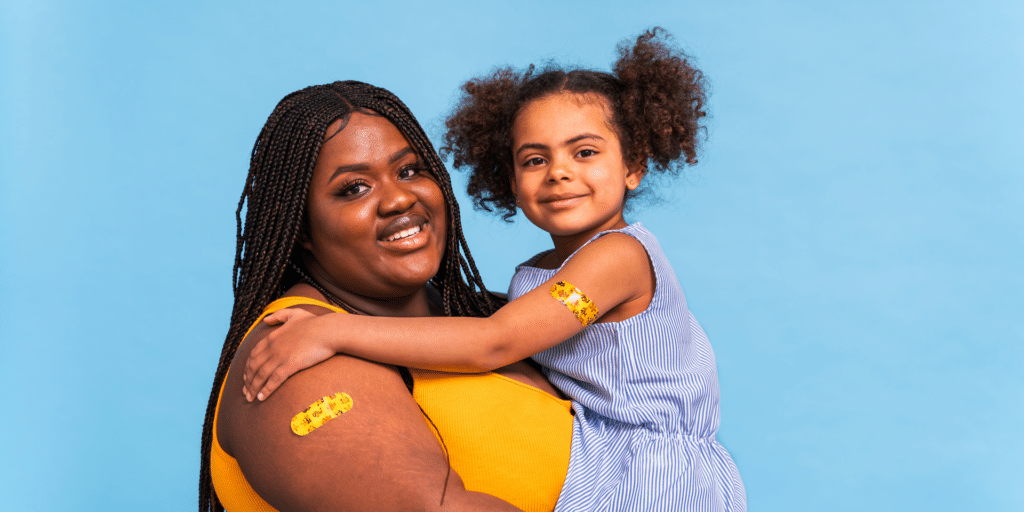
Here at PDX Parent, we are thrilled to finally get our kids vaccinated. Some of our children are excited (“I get to have a vaccine card just like you, Mom!”), while others are a little scared. But even the ones with a bit of shot anxiety were brave and made it through their first doses like little champs. When our publisher circled her daughter’s vaccination appointment on the family calendar, her daughter added this in the margin: “Lu will be safe.”
It has been a long road, but if you’re like us, you’re rejoicing that this moment has come. For many families, the ability to now vaccinate their children means widening their bubbles: Getting to see dearly missed relatives, the opportunity to travel for the upcoming holidays and simply the overall sigh of relief that our kids are safer from a virus that’s taken away so much.
We know that getting your child vaccinated is a big deal—for you and them! Our comprehensive resource guide below not only includes where to get the shot, but also tips for making the trip a successful one.

Vaccination Sites
Your Child’s Doctor’s Office
Your child’s pediatrician’s office is a somewhat familiar place, for both your child and you. Plus, their doc will know what other vaccinations your child may need. It’s the perfect two-birds-with-one-stone approach.
Local Pharmacies
You might have received your own COVID-vaccine at a pharmacy. These places, which often include a private room, make good options for your kids, too.
Fred Meyer
Safeway
Walgreens
Rite Aid
Schools
Portland Public Schools recently announced that it will be holding vaccination clinics at eight schools in the upcoming weeks. The clinics will be open in the afternoons and evenings, to accommodate the schedules of busy parents. And another bonus for the adults—vaccines, booster shots and flu shots will also be available. Vaccinated family for the win!
Boise-Eliot/Humboldt Elementary
César Chávez School
Faubion School
Lent Elementary
Rigler Elementary
Rosa Parks Elementary
Scott Elementary
Sitton Elementary
Vaccination Events
Organizations across the Portland metro are moving quickly to organize vaccine events. And since these are kid-specific, they’ll also include a healthy dose of fun!
PlayDate PDX is partnering with Pearl Health Center to vaccinate kids, plus, a party afterward. Families who are vaccinated can enjoy free admission to the indoor play space, live music and food and drinks.
From November 5-14, Sellwood Medical Clinic is hosting a drive-through vaccine event at Oaks Amusement Park.
Government Vaccine Locator
The Oregon Health Authority has done a solid job of informing Oregonians on where to get tested for the virus and vaccinated. Just head to its Get Vaccinated Oregon site to find available shots near you.
Tips for a Successful Vaccination Trip

Getting a vaccine isn’t exactly a fun outing. So, how do you make the occasion momentous for squirmy, possibly scared kids? Here’s our been-there advice:
Talk about the big day beforehand.
What will being vaccinated mean for your child and your family? For our web content coordinator’s son and daughter, being vaccinated means being able to do more indoor activities — perfect now that it’s cold out — seeing cousins in Texas and showing off that vax card. “The next time we go to a show, I can show them my vaccine card!” says her daughter. Focusing on the benefits that mean the most to your child will make the shot itself much easier to take. In fact, our editor’s daughter even said, “This is the first shot I have ever looked forward to!”
Bring a device or book.
Even if you have a scheduled appointment, chances are you’ll still wait in line. And if you’re vaccinating younger ones, bring a stuffed toy from home; they make for a great thing to squeeze while they’re getting vaccinated.
Pack a piece of hard candy.
This is another great distraction from the needle! Suckers are tricky with masks, so be sure to bring something they can slip under the mask and still keep a good seal.
Plan a celebratory outing afterward.
Whether it’s a sweet treat or fun takeout, you all deserve it!
Questions about the flu shot? Dr. Allison Baynham answers your flu vaccine questions here.
- Portland-Area Thanksgiving Turkey Trots - November 6, 2023
- Where to Vaccinate Your Child in Portland - November 8, 2021




